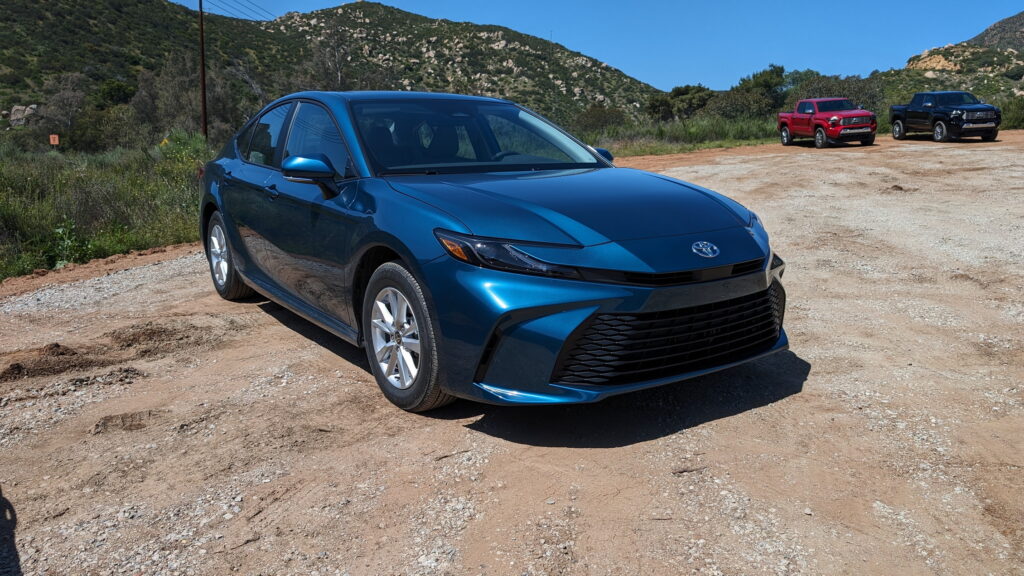Six years after its introduction, Toyota is providing a major refresh for the eighth-generation Camry. Included with it is a new exterior design, a huge revamp of the cabin, and the demise of any engine from the 2024 model year that wasn’t electrified – including the V6. Each of those updates is important on its own merit. Collectively, they form a seriously overhauled Camry lineup.
For its part, Toyota must be quite confident about its changes seeing as the Camry is responsible for selling nearly 300k units a year in the States alone. It has been the best-selling passenger car in the US for the 22nd consecutive year and the most purchased vehicle in the region that wasn’t an SUV or a pickup truck. To say that it’s popular is an understatement.
Review: The 2024 Toyota Land Cruiser Is The 4-Runner For Grown Ups
If it’s going to keep that kind of sterling sales reputation though it needs to be significantly better, not just a flashier version of its previous self. After six years of production, Toyota appears to have distilled the Camry ethos and come to the market with a more focused product. To find out just how it was in the real world, we drove it for two days in both urban and rural areas of California. Here’s what we learned.
Quick Facts
An Electrified Lineup
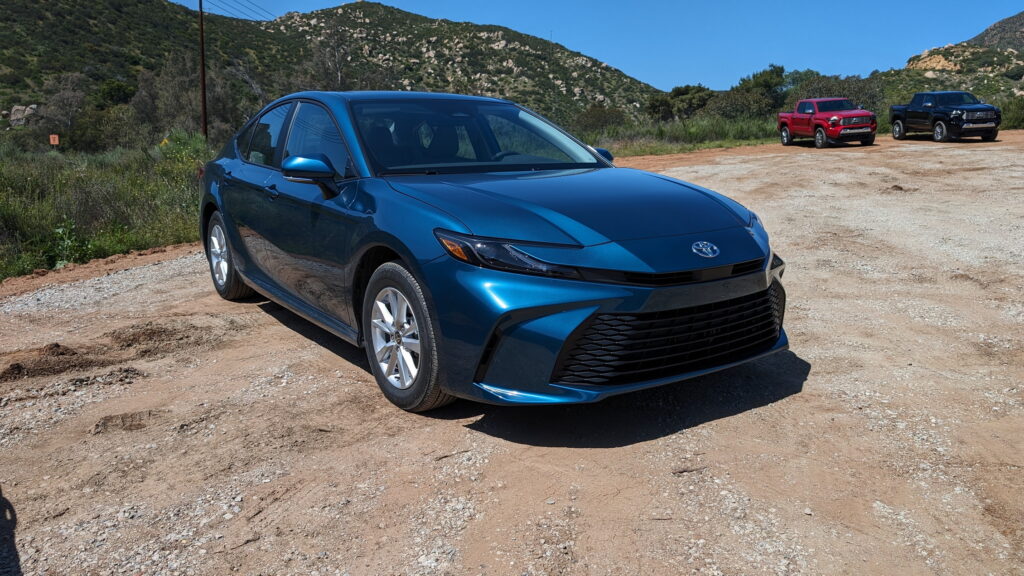
Last year, the Toyota Camry Hybrid made up just 12.2 percent of all Camry sales. For the 2024 model year that figure will be 100 percent since every Camry now comes with the same hybrid engine and the same continuously variable transmission (CVT). All Camry hybrids are now available with front or all-wheel drive too.
The power plant consists of a 2.5-liter four-cylinder engine that makes 225 horsepower (167 kW) on 87 octane fuel in front-wheel drive models and 232 hp (170 kW) in AWD variants. Notably, Toyota says that the FWD version will get up to 51 mpg combined.
Those horsepower and fuel economy figures are the ones that Toyota is leaning heavily on when it comes to the success of this updated Camry. They beat the Honda Accord (204 hp / 48 mpg) and the Hyundai Sonata (192 hp / 47 mpg). It’s also an upgrade in power as well as fuel economy compared to the 2024 Camry Hybrid that made just 208 hp (152 kW) wasn’t available with AWD.
More: What Do You Want To Know About The New Toyota Camry?
The 2024 Camry actually scored slightly better in fuel economy testing with 52 mpg combined. That’s not entirely surprising since adding a bit of additional horsepower tends to reduce overall efficiency in most engines. Interestingly, Toyota wouldn’t tell us how much torque this engine makes. The 2.5-liter four-pot is largely identical to the 2024 Camry Hybrid’s engine and the tradeoff seems worthwhile. One mpg amongst 51 or 52 is a figurative drop in the gas tank.
2025 Toyota Camry Pricing
Boasting 10 percent or more horsepower above the competitors is likely to matter more to buyers who directly cross-shop the competition. The addition of AWD to the Hybrid lineup will certainly widen the appeal of the Camry, but keep in mind that the rear wheels only get power from an electric motor and only when the ECU deems it necessary.
Will buyers be comfortable with having nothing but a hybrid option? Well, they should be. Over the last few years, data from the NHTSA indicates less than five total complaints about the Camry Hybrid.
New Styling And Comfort
Photos Stephen Rivers/Carscoops
When the latest Prius arrived, it was rightly lauded for its excellent exterior design. Toyota has brought a chunk of that flair to the new Camry as well. Frankly, it’s a pretty good look on this car and it blends well with small touches from the Crown sedan too. Beauty is in the eye of the beholder, but to me, the front of the 2024 model never really flowed with the rest of the body. Now, the design feels more cohesive and consistent with the model’s goals.
The cabin hits that same stride as well. The previous Camry had a mix of swoopy curves, diagonal strakes, and a perfectly rectangular infotainment system all baked into the same dash. This one goes for protracted straight lines with most gentle curves only where they’re needed. It’s cleaner and more harmonious at the same time.
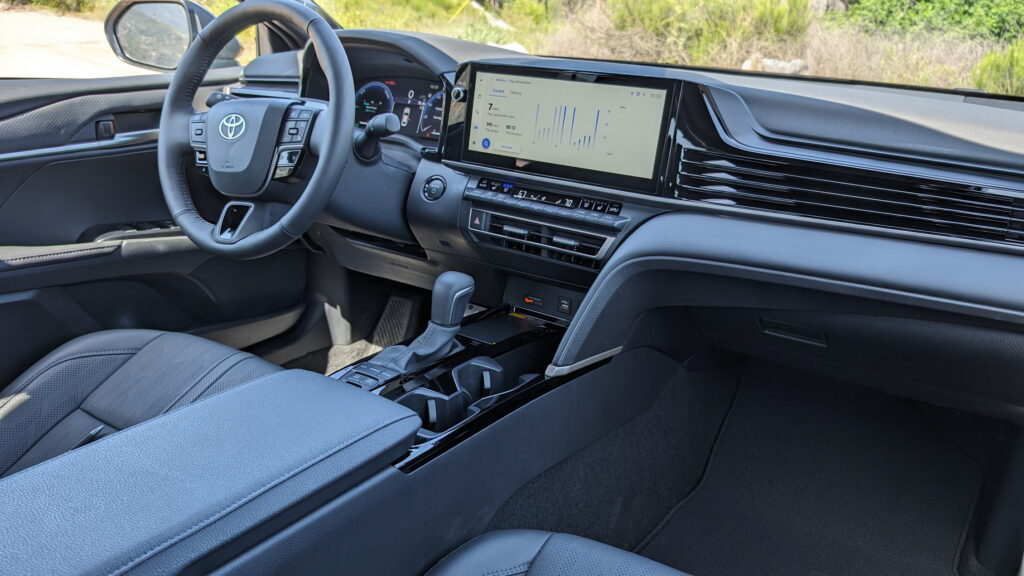
The infotainment system includes a 7-inch digital gauge cluster and an 8-inch infotainment system on the LE and SE trim levels. The XLE and XSE both get 12.3-inch screens for each application. Android Auto and Apple CarPlay are standard across the board but the native system is intuitive and reasonably quick for those who prefer not to fuss with their phone. Sure, it looks like Toyota basically upsized the font setting or lowered the DPI in most menus but not everyone dislikes that style.
Related: Can Someone Please Make This 2025 Toyota Camry Widebody A Reality?
Toyota also ditched the fake aluminum and fake wood previously found in the cabin. Instead, it’s using soft-touch materials mostly made of fabric or faux leather and while that might not initially look as fancy, we think it’s a great choice. Having a material simply be whatever it actually is breaks away from the norm these days. On top of that, Piano Black plastic trim is almost completely absent.
The seating feels good, though I (being on the taller side at 6’6″) couldn’t quite fit comfortably without tilting my head or leaning my seat back some. Nevertheless, the chairs in the Camry are supportive, nicely finished, and adjustable enough for everyday use. The positive experiences in the cabin continue with the switchgear, which feels nicely weighted and appropriately located.
Unfortunately, Toyota didn’t maintain the same high-quality theme in the back seats. The soft-touch materials on the front door cards and dash are nowhere to be found in the rear. In addition, audiophiles might be turned off by the lack of options here. Every Camry, even the XLE, comes standard with just four speakers. Even the premium package includes just nine in total.
By comparison, the Hyundai Sonata and Honda Accord blow that out of the water with 12. The center console tunnel provides rear climate vents and a couple of USB-C ports though. The trunk holds up to 15.1 cubic feet worth of gear which is identical to the 2024 Camry.
Driving Impressions
Photos Stephen Rivers/Carscoops
One would be forgiven for thinking that the updated 2025 Camry would drive almost identically to last year’s model. After all, it sits on the same platform, it uses a very similar engine to the 2024 version, and on the face of it, the only major change is the availability of all-wheel drive. It was available on non-hybrid models in the past but never when combined with the electrified drivetrain. Dig a little deeper though and it’s clear that Toyota might not carry over the TRD version of the Camry, but it’s applied some of its learnings there to this new sedan.
The suspension is re-tuned in all new Camrys and in the corners of Californian canyon roads it feels good. The SE and XSE each get a sport-tuned suspension that includes unique shocks and a thicker front sway bar for a more responsive ride. The two setups do feel better than last year’s model and each feels unique comparatively.
At the same time, there are some things that won’t always bring joy to the life of the eventual Camry owner. For example, merging onto a highway or overtaking is met with a considerable drone from the CVT as it and the engine do what they can to reach the speeds requested. The engine, while more powerful than options from Hyundai and Honda, won’t fulfill the need for speed that some buyers may have.
Those who want the AWD version hoping that it’ll provide a more sporty experience are going to end up disappointed. Having tested both the FWD and AWD versions of the Camry, they behave almost identically. The only time I noticed any difference is in how they leave a stop light. The FWD can exhibit very minimal wheel slip whereas the AWD variant simply grips and goes. Of course, this is a Camry we’re talking about so those focused on performance metrics shouldn’t really be considering one in the first place.
Interestingly, the noticeable differences end up based on suspension tuning more than anything. The LE and XLE each get their own unique suspension that’s a bit softer. The XSE and XLE also include more sound-deadening technology to keep the cabin quiet. Those differences are more pronounced than in years past. Our testing wasn’t truly indicative of how most buyers will use the Camry but it’s worth noting that we only managed 29 mpg combined.
The brake pedal is noticeably better across the lineup than in the older Camry Hybrid. It’s smooth and linear without the odd engagement that some regenerative systems suffer from. The steering is very good as well. A bit of numbness on center is perhaps the only downside in the controls. Pitch the Camry into a turn and not only does it respond admirably but it communicates grip level at a high level too. Each of these features leads to a driving experience that’s largely uncomplicated and easy to enjoy.
Conclusions
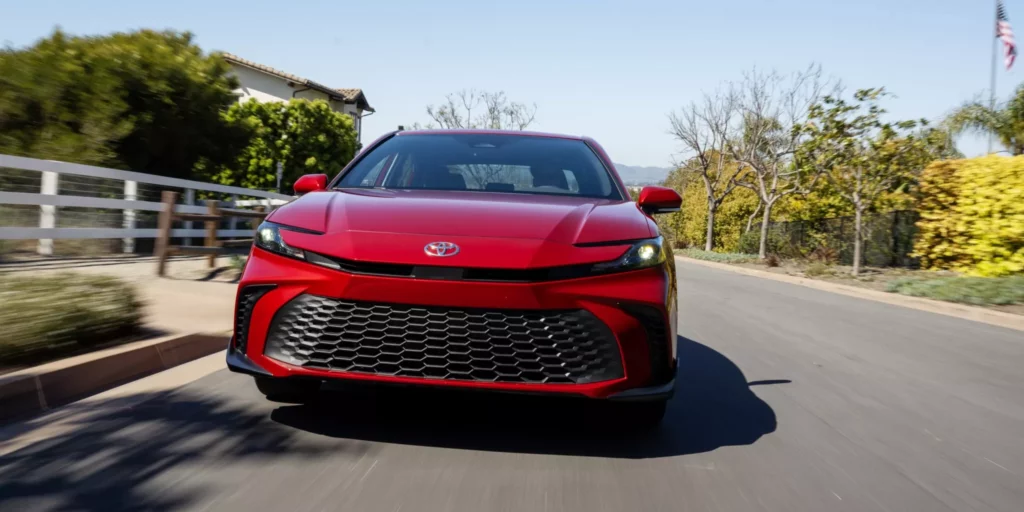
On paper and on the road, the new Camry is a better car than its predecessor. It’s leaning into comfort and efficiency which makes sense overall. Toyota also includes Safety Sense 3.0, which encompasses full-speed adaptive cruise control, lane-departure alert with steering assist, road sign assist, lane-tracing assist, and more. The overarching theme is in tune with previous iterations of the Camry.
It aims to be above average in just about every possible way. It offers a lot of value, features, and fuel economy for its competitive $28,400 (before destination) starting price, and it looks quite attractive now too.
As mentioned, it’s better on paper where most buyers will look, namely, in terms of power and fuel economy. Will buyers be willing to continue snatching up approximately 24k Camrys a month as they did in 2023 now that they’re all hybrids? We bet the answer is yes.
Photos Stephen Rivers/Carscoops
Author Profile
Latest entries
 LifestyleApril 24, 2024New Mini Aceman EV Is Big On Space, Small In Size
LifestyleApril 24, 2024New Mini Aceman EV Is Big On Space, Small In Size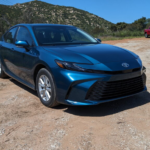 LifestyleApril 18, 2024Review: The 2025 Toyota Camry Hybrid Distills Its Strengths Into A More Attractive Package
LifestyleApril 18, 2024Review: The 2025 Toyota Camry Hybrid Distills Its Strengths Into A More Attractive Package LifestyleApril 15, 2024Exclusive: The Real Story Behind Porsche’s Latest Spat With Singer
LifestyleApril 15, 2024Exclusive: The Real Story Behind Porsche’s Latest Spat With Singer LifestyleApril 14, 2024Catch Me If You Can: NYC’s Most Wanted Driver Trolls Cops In YouTube Interview
LifestyleApril 14, 2024Catch Me If You Can: NYC’s Most Wanted Driver Trolls Cops In YouTube Interview

